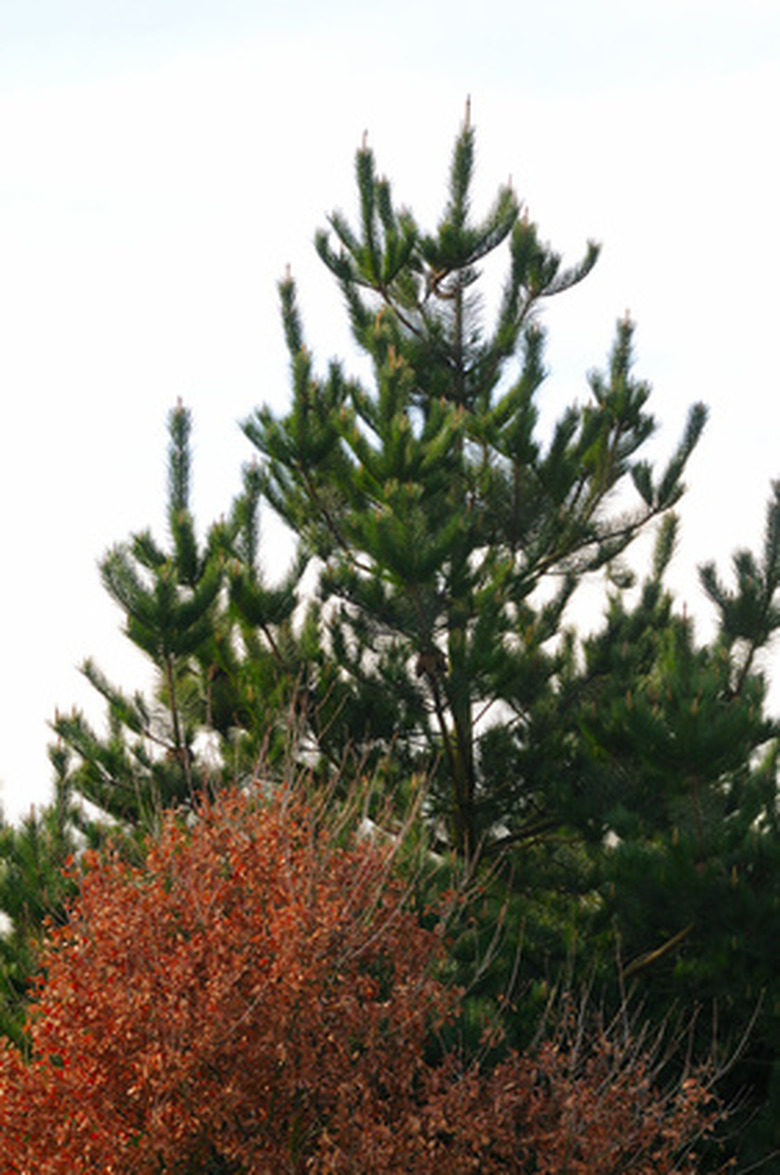How To Transplant Trees In Texas
Things Needed
- Trees
- Sharpshooter shovel
- Standard garden shovel
- Tarp
- Mulch
Transplant trees in Texas in late fall and winter when trees are dormant. Not all trees can be easily transplanted, however. A tree more than 6 inches in diameter needs to be dug with professional machinery for transplanting to a new location. That is because damage to the root system occurs when a large tree is moved and the amount of soil around the root base of a large tree is so heavy. Move established trees 3 to 6 inches in diameter without the use of heavy machinery by planning a year in advance. Dig smaller trees with the root ball intact to successfully move them during winter or late fall.
Step 1
Locate the trees to be moved the fall before they are to be moved. The feeder roots, which take up water and nutrients, are located at the end of the root systems. If you dig the trees and cut off all the roots, you will eliminate the feeder roots. To prevent shock, cut half the root systems the first year to prepare the trees for transplanting the next year. New feeder roots will form at the end of the roots that are pruned to support the trees when they are finally dug for transplanting.
- Transplant trees in Texas in late fall and winter when trees are dormant.
- Dig smaller trees with the root ball intact to successfully move them during winter or late fall.
Step 2
Use a sharpshooter shovel and sever the roots 6 to 8 inches from the tree trunks in a half circle around the bases. Be sure the shovel is sharp so the roots are cut cleanly and not crushed. Push the shovel into the ground all the way. Water the trees more than normal after the root pruning, especially during the dry summer, to encourage new feeder roots to form.
Step 3
Prepare the trees for transplanting the following fall or winter. Using the sharpshooter shovel, cut the other half of the roots the same way the other roots were cut the previous season. After the other roots are cut, use a standard garden shovel to dig the tree from the ground. Begin digging about 3 inches out from the line where the roots were previously cut on the other side of the trees. If the trees have a deep tap root, dig down as far as possible before severing the tap roots. Pull the trees from the ground on to a tarp so you can easily drag or carry them to the new location. Sprinkle the root bases with water and keep in a shaded area while preparing the new planting holes. Don't wash away all the dirt from the root balls. Leave as much dirt around the root balls as possible.
- Use a sharpshooter shovel and sever the roots 6 to 8 inches from the tree trunks in a half circle around the bases.
- Pull the trees from the ground on to a tarp so you can easily drag or carry them to the new location.
Step 4
Dig a new hole for the trees twice as wide as the root balls and deep enough so the trees are planted at the same depth as in the previous location. Set the trees into the new planting holes and backfill the holes with the same soil removed from the holes. As you add dirt to the new holes, constantly add water to the soil so no air pockets are formed around the roots of each tree. Add a 1-inch layer of mulch around the base of the newly transplanted trees. Leave a 1-inch space between the mulch and the trees so mildew cannot spread from the mulch to the trees.
Step 5
Water the trees frequently during the first growing season so they can recover. Allow a stream of water from a pencil-width hose to run at the base of each tree for one hour each week if an inch of rain doesn't fall. Do not overwater as the root systems can rot if left sitting in water.
- Dig a new hole for the trees twice as wide as the root balls and deep enough so the trees are planted at the same depth as in the previous location.
- As you add dirt to the new holes, constantly add water to the soil so no air pockets are formed around the roots of each tree.
Tip
Follow the same procedure for any number of trees to be transplanted.
